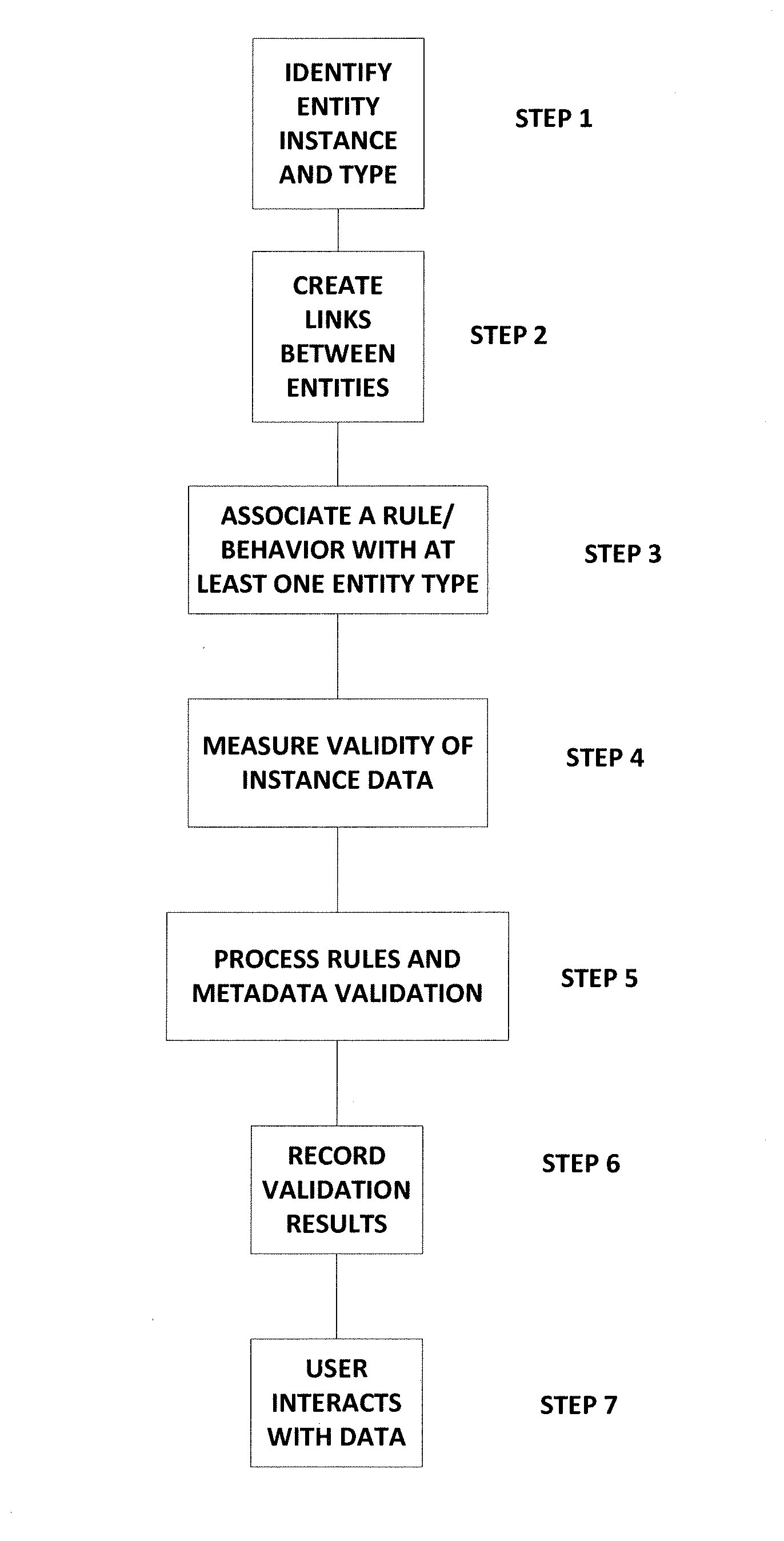Constraint free model
- Summary
- Abstract
- Description
- Claims
- Application Information
AI Technical Summary
Benefits of technology
Problems solved by technology
Method used
Image
Examples
Embodiment Construction
[0021]Referring to FIG. 1, a method of modeling a network and service inventory, by which relationships between entities are defined with types and, hence, a similar method of applying rules and metadata constraints, separate from the existence of the relationship itself, can be employed, is shown. Referring to FIG. 2, in database modeling, each and every entity 11, 12, e.g., a site, a location, a cable, a chassis, a rack, a shelf, a slot, a cross connection, an interface, a channel, a capacity, a network topology, a network device, a card, a port, a connection, a customer, a service, and any combination thereof; as well as any relationship therebetween, may be modeled with the following basic information: entity identification (ID) 13, entity NAME 14, and entity TYPE 15 (STEP 1). Each instance of an entity must have a TYPE, which can be a simple label such as “device,”“router,” or “unknown.” However, each TYPE can have a plurality of instances. Referring to FIG. 3, in which a first...
PUM
 Login to View More
Login to View More Abstract
Description
Claims
Application Information
 Login to View More
Login to View More - R&D
- Intellectual Property
- Life Sciences
- Materials
- Tech Scout
- Unparalleled Data Quality
- Higher Quality Content
- 60% Fewer Hallucinations
Browse by: Latest US Patents, China's latest patents, Technical Efficacy Thesaurus, Application Domain, Technology Topic, Popular Technical Reports.
© 2025 PatSnap. All rights reserved.Legal|Privacy policy|Modern Slavery Act Transparency Statement|Sitemap|About US| Contact US: help@patsnap.com



